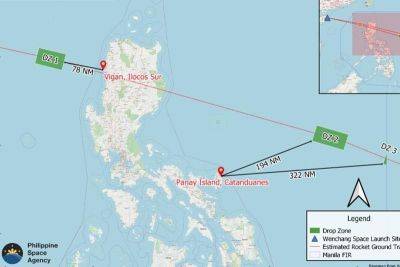Weak warnings, land use exacerbated impact of heavy rain in Mindanao — scientists
MANILA, Philippines — Scientists found deforestation, settlements in danger zones, and inadequate warning systems were key factors in the deadly effects of heavy rainfall in Mindanao last February.
Heavy rains brought by the northeast monsoon and a low-pressure trough caused massive floods and landslides across Mindanao last month, burying villages and leaving dozens dead.
In Brgy. Masara, a gold-mining village in Maco, Davao del Sur, landslides claimed 98 lives.
According to a rapid analysis by climate scientists from the World Weather Attribution, heavy rainfall events are now dumping 50% more rain in Mindanao.
However, they pointed out that while the February rainfall was “unseasonably heavy,” it was not “particularly extreme.”
The lack of early warning systems and the presence of communities in landslide-prone areas turned it into a “devastating” event, scientists said.
“We can’t just blame the rain for the severe impacts. A range of human factors is what turned these disasters into deadly disasters,” said Richard Ybañez, chief research specialists of the University of the Philippines Resilience Institute.
The landslide in Masara occurred in an area designated as a no-build zone by the environment department’s Mines and Geosciences Bureau (MGB) after a similar tragedy in 2008.
The scientists highlighted how deforestation due to farming, logging and mining operations across eastern Mindanao has increased the risk of landslides and floods.
Additionally, they noted that poverty negatively impacts the ability of communities to cope with extreme weather events “as their livelihood channels tend to be more limited and climate-sensitive” like mining and farming.
The report also said there are “large gaps” in the region’s early warning systems.
It noted that disaster risk management policies and funding primarily focus on reactive measures like response, and that rainfall and stream level sensors in the area are no longer functioning.
“Evacuations from high-risk locations were carried out when the island was hit by the rainfall in late January. However, many people were still in harm’s way,” Ybañez said.
“It is critical that both early warning systems and







